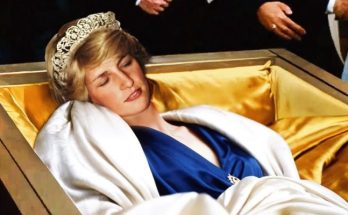Have you ever noticed that buttons on men’s shirts are always on the right, while on women’s shirts, they’re on the left? This seemingly simple design feature is a result of centuries-old traditions rooted in practicality, social customs, and even gender distinctions. The positioning of buttons has persisted through the ages, and while it may seem like a trivial detail today, the story behind this tradition offers fascinating insights into the history of fashion and culture.
The Origins of Buttons in the 13th Century

Buttons first appeared in Europe around the 13th century and were considered a luxury item. Unlike today, when buttons are common and affordable, they were once highly prized and typically reserved for the wealthy. Made from materials like gold, silver, pearls, gemstones, and ivory, buttons symbolized status and sophistication.
For upper-class women, wearing clothes adorned with buttons was a mark of privilege. However, there was a practical element to this luxury—many women of high status did not dress themselves. Instead, they had maids or servants to help them. To make it easier for the right-handed maids to fasten buttons, they were placed on the left side of women’s garments. This practical decision gradually became a fashion standard, indicating both wealth and class distinction.
Why Women’s Buttons Are on the Left
The button placement on the left side for women’s clothing stems from the fact that wealthier women had attendants to assist them in dressing. Since most people are right-handed, it was easier for the maids, standing opposite their mistresses, to fasten buttons placed on the left side of the garment.
Symbol of Status: During that time, having buttons on your clothing signaled affluence, but the left-sided button placement also suggested that the wearer did not dress herself, further highlighting her elite status. Over time, this became a societal norm, and even as buttons became more affordable, the tradition continued in women’s fashion.
Gendered Fashion: As fashion evolved, so did the gender distinctions in clothing. The left-sided buttons on women’s garments became not just a reflection of wealth but also a way to differentiate women’s fashion from men’s. It was an indication of femininity and the delicate role of women in society, especially among the higher classes.
Men’s Buttons and Their Military Origins

While women’s buttons were placed on the left for practicality and status, men’s buttons have a different origin, rooted in the military. For men, buttons were placed on the right side, aligning with the needs of soldiers and hunters.
Right-Hand Dominance: Most men are right-handed, and historically, men needed easy access to weapons while wearing military or hunting gear. In the past, carrying a sword or firearm was common, and the motion of drawing a weapon typically involved the right hand crossing the body from left to right. Having buttons on the right side made it easier for men to unbutton their shirts or jackets with their left hand while their right hand was occupied with drawing a weapon.
Practicality in Warfare: Military uniforms have long influenced men’s fashion, and button placement is no exception. Soldiers needed their clothing to be functional in high-stress situations, and having buttons on the right allowed for faster movements. Over time, this became the standard in men’s clothing, even as society transitioned away from frequent warfare.
Why the Tradition Continues Today
While the practical reasons for button placement—like maids dressing wealthy women or men needing quick access to weapons—are no longer relevant, the tradition persists. But why?
Fashion as Tradition: Fashion is often rooted in tradition, and some elements, like button placement, remain long after their original purpose has faded. The opposite-sided buttons on men’s and women’s shirts are one of those quirks that have become embedded in the history of fashion. Though there is no longer a need for women to have buttons on the left and men on the right, the fashion industry continues to follow these guidelines simply because it has always been done this way.
Cultural Continuity: Clothing is more than just a necessity—it’s a reflection of cultural values, history, and social structures. By maintaining these design differences in men’s and women’s fashion, we are, in a sense, keeping a link to the past. The distinction between men’s and women’s clothing has been a long-standing tradition, and something as small as button placement serves as a subtle reminder of these deep-rooted gender roles.
Button Placement in Modern Fashion

Today, the gendered placement of buttons is more of a stylistic choice than a functional one. However, many designers and clothing brands still adhere to the traditional rules. In men’s shirts, buttons remain on the right, while women’s shirts typically feature buttons on the left.
Unisex and Contemporary Fashion: In recent years, unisex fashion has gained popularity, and with it, we see designs that break these traditional norms. Unisex clothing often places buttons in the center or on whichever side is more convenient for the design, reflecting the growing shift toward less gender-specific fashion.
Despite these modern trends, the opposite placement of buttons in men’s and women’s shirts is still widely observed, especially in formal or traditional wear. Whether it’s a dress shirt, blazer, or blouse, the button placement reflects a continuation of the historical norms that once defined gender roles.
The Impact of Button Placement on Fashion
Even though it might seem like a minor detail, the placement of buttons has had a significant impact on fashion and its evolution over the centuries. It has shaped the way we distinguish men’s and women’s clothing and continues to play a role in the aesthetics of modern fashion.
Attention to Detail: Designers often pay close attention to these small details, knowing that something as simple as button placement can impact the overall look and feel of a garment. Buttons may be decorative or purely functional, but their placement carries historical weight that influences contemporary design.

A Nod to the Past: The continued use of opposite-sided buttons serves as a subtle homage to the past. It reminds us of how fashion has evolved, blending utility with social expectations. While the reasons behind this button placement are no longer as relevant, it continues to symbolize a connection to fashion’s roots.
Conclusion
The reason buttons are placed on opposite sides for men’s and women’s shirts dates back to centuries-old traditions based on practicality and social norms. For women, buttons on the left allowed right-handed maids to dress their mistresses with ease, while for men, right-sided buttons made sense for those who needed quick access to weapons in military or hunting scenarios.
Though these original reasons may no longer apply, the tradition remains deeply ingrained in modern fashion. It represents a link to the past, a cultural distinction between genders, and a continuation of historical design principles. Today, the placement of buttons may be more about style than function, but it remains a fascinating glimpse into the evolution of fashion through the ages.



